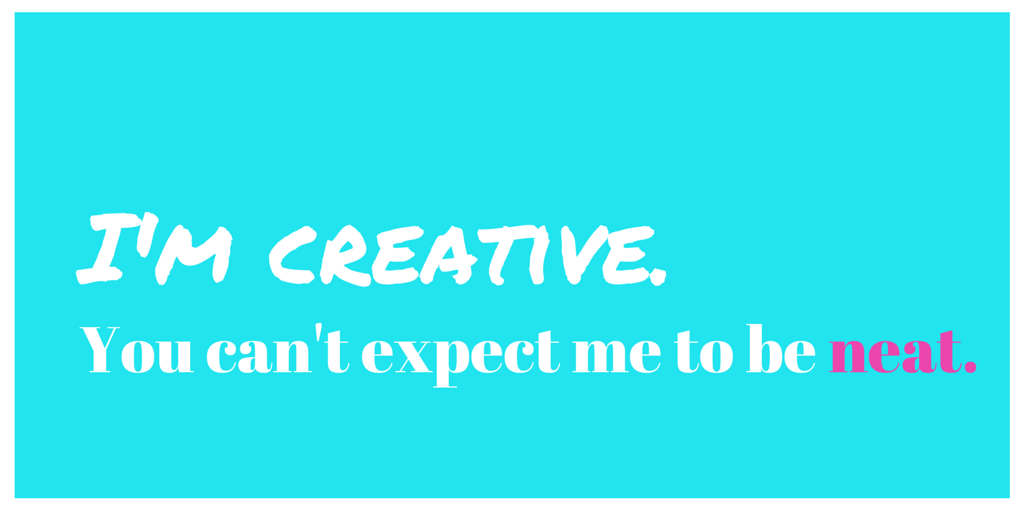How to Get Ideas: A Proven Framework for Success

I know how to get absolutely amazing and revolutionary ideas. It doesn’t require any illegal drugs; just a good ole’ traditional process.
Yeah, I know, I know – the latter seems so lame compared to the prior, but hey, that’s a whole different animal.

In this post, you will learn a technique for producing ideas that will make you so good, you’ll leapfrog over the people who have been diligently practicing this process for years.
Ready. Set. Ideate!
Key Takeaways
- An idea is a new combination of old elements, and generating ideas requires the ability to connect these elements or see relationships.
- The five-step framework for producing ideas involves: Gather (collect information from various sources), Chew (mentally digest the gathered information), Forget (take a break from thinking about your ideas), Wait (allow the idea to come naturally), and Shape (develop the idea into something useful).
- The process of idea generation should be continuous and habitual, with a wide array of different sources to draw inspiration from.
- Sharing your ideas and receiving criticism is an essential part of the process, as it can lead to more or better ideas.
Introduction
The Pareto Principle
According to The Pareto Principle, there are two types of people – speculators and rentiers.
Speculators are the rebels. They’re the ones who can’t leave well enough alone and who speculate how to change anything and everything that isn’t working. They are obsessively preoccupied with the possibilities of new combinations.
On the opposite end of the spectrum are rentiers. Rentiers are stereotypical banker or consultant types. They’re steadily consistent routine-followers. Rentiers are unimaginative conservatives, who speculators manipulate.
For the sake of you reading this post, I hope you’re a member of the first group because that’s who this one is for – the speculators.
Two Principles of Idea Generation
Learning is comprised of two things:
- Principles
- Methods
Just like you’d learn anything in life, you’ll learn the idea generation process the same way so first let’s detail the principles of this technique then move on to the method.
Principles
Principle 1: An idea is nothing more nor less than a new combination of old elements.
Principle 2: Having the capacity to bring old elements into new combinations depends largely on the ability to connect the dots or see relationships.
Principle 2 is the big differentiator between speculators and rentiers. Speculators have a somewhat innate ability to connect ideas – i.e. see relationships.
Think about how Google intuitively searches for the right results instantaneously – without thinking.
Your mind needs to act like this if you want to become really good at producing ideas.
The best idea generators have made this process a habit – something they don’t even think about – a reaction is a good word to describe the act of generating ideas for these people.
The habit of searching for connections between ideas is the utmost important part in the production of new ideas.
By now, you should have a solid foundation that will help you grasp the five-step framework I’m ready to detail.
The Five-Step Framework for Producing Ideas
Important note: For this process to be effective, you must complete the steps in the order outlined below.
1. Gather.
John Wesley makes a great point in his post, “The Secret to Creativity.”
“The biggest misconception about creativity is that it involves a moment of magical creation when the incredible appears out of thin air. The truth is less romantic. Everything comes from somewhere. All ideas have been thought before and all artists, especially the most brilliant, have their sources of inspiration,” Wesley said.
I agree with Wesley and Einstein: The secret to creativity is knowing how to hide your sources.
The reason I have so many ideas about how to solve every single problem I (or a client, friend, whomever) have is because I am a voracious reader. I read books, blogs, articles, newspapers, texts, emails – everything. Not only do I incessantly read, but I also talk to a multitude of different types of people all day long.
This might sound overwhelming to the majority of idea generating noobs, and, I won’t lie, it can get draining after a while; but it’s so much fun that you forget you’re working.
It’s vital that the gathering process is continuous or never-ending – only of course, if you want to make the idea generation process a habitual one.
If you’re a programmer, think of the “gathering” stage as a continuous deployment type of thing.
Where to Gather Online
Here’s where I love to frequent online. (Use with caution, these places will make your mind explode with ideas).
- Product Hunt: Daily curation of the coolest new startups, products and services.
- PickCrew blog: Phenomenal blog for entrepreneurs and freelancers.
- Quibb: Article curation newsletter for entrepreneurs and creatives.
- Hacker News: Y Combinator’s (YC) Reddit-like forum.
- Reddit: Online forum flooded with ideas on any topic your little heart desires.
- Buffer blog: Blog on social media and marketing.
- Andrew Chen: Silicon Valley icon Andrew Chen’s blog.
- The Muse: Career website with amazing advice for anyone really.
- Slack Groups: I’m a member of multiple active and brilliant Slack groups.
- Sidekick: HubSpot’s advanced blog on business and marketing.
- Panda: Daily news and inspiration for designers, developers and entrepreneurs.
- Inbound.org: HubSpot’s community of forward thinking inbound marketers.
- GrowthHackers: Sean Ellis’ vibrant community of growth hackers.
- Medium: A place to blog and read good stuff on a wide variety of topics.
- Harvard Business Review: Think Dale Carnegie and Peter Drucker.
- NY Times: Forward-thinking newspaper.
How to Organize Your Ideas

To be honest, I’m not very good at this part. I guess what you could say is I’m an organized mess.
The idea generation process is a ridiculously quick moving one, which sucks, because it makes it that much more difficult to document your ideas as they invade your mind.
Because of this, I suspect the majority of people with ideas, are living in a similar type of organized chaos.
My motto for this phase is: Bookmark and move on.
I regularly use three tools in this stage, including:
- OneTab: Whenever you find yourself with too many tabs, click the OneTab icon to convert all of your tabs into a list.
- Pocket: When you find something you want to view later, put it in Pocket.
- Trello: Trello is a fantastic tool to organize anything.
One More Thing Before We Move On…
You may have noticed above that I frequent a wide array of different places. This is important to point out because, to be a good idea generator, you have to be interested in just about everything.
The reason so few people get paid to think of ideas all day long is because the majority of people are constantly reading or gathering information about things that are only interesting to them.
Take the kaleidoscope for instance:
“The kaleidoscope, as you know, is an instrument which designers sometimes use in searching for new patterns. It has little pieces of colored glass in it, and when these are viewed through a prism they reveal all sorts of geometrical designs. Every turn of its crank shifts these bits of glass into a new relationship and reveals a new pattern. The mathematical possibilities of such new combinations in the kaleidoscope are enormous, and the greater the number of pieces of glass in it the greater become the possibilities for new and striking combinations.”
Think of the production of ideas as you would a kaleidoscope.
2. Chew.
After you’ve exhausted yourself with reading, (but really during step 1 as well), you need to chew on everything you’ve taken in thus far.
Mentally digest your new knowledge.
During this stage, it’s easy to appear absent-minded to others, but don’t let anyone make you think you’re being unproductive because this is a required part of the process.
During this step, you need to write down or type out all of these partial ideas you will get after reading so much. Don’t try to elaborate on all of them. Just literally go with the flow.
Whatever you do though – just make sure you write down every single one of your ideas – no matter how half-baked or stupid.
You’ll know you completed step 2 once you reach a hopeless state. You’ll feel drained and tired – in the best way possible, of course.
3. Forget.
This is really quite simple. Stop, drop and roll – into something totally different and fun.
Go to a concert. Get a beer with some friends. Do anything but think about your ideas.
4. Wait.
In this stage of the game, the ball is no longer in your court – i.e. you just have to wait for it.
The brilliant idea will come to you when you least expect it to – in the shower, on your commute home and/or any other impromptu time to get a revolutionary idea.
Because speculators are obsessive, you will be constantly thinking about your idea, meaning you’ll constantly be testing different pieces of the puzzle until the magic moment when pieces begin putting themselves together.
5. Shape.
The final and fifth step in this technique for producing ideas requires that you shape and develop this idea into something useful for yourself and others.
It’s time to bring your idea into reality.
Screw stealth mode. No one wants to steal your bloody idea – trust me.
You need to share your idea because you need to collect criticism and ideas from others.
Why? To get more (and/or better) ideas – duh!
Conclusion

Whether you need some inspiration for a simple marketing campaign or want to found a startup, the framework I detailed above will help you reach your goal.
And since I began with Wesley’s words, I’ll end with his too, because he perfectly articulates the key takeaways of creativity:
It’s also important to draw from a wide array of sources. Your best option is to play the statistics. Creativity isn’t a spark it’s a boiling pot. Sample an enormous amount of creative work and you’ll produce an inspirational concoction. The most important creative asset is curiosity.
Genuine creativity doesn’t exist, particularly in a cosmic sense. Living beings don’t create life, they re-purpose existing matter into offspring. Nothing has been created since the Big Bang. All we can do is rearrange the stuff we find around us. If you want to be more creative, stop waiting for inspiration and start experimenting. Creativity isn’t creation at all, it’s reorganization.
Frequently Asked Questions (FAQs) about Generating Ideas
How can I generate new business ideas?
Generating new business ideas requires a combination of creativity, market understanding, and problem-solving skills. Start by identifying a problem that needs solving or a gap in the market. Then brainstorm possible solutions, considering different angles and perspectives. It’s also beneficial to research existing businesses and products for inspiration and to ensure your idea is unique.
What are some techniques for brainstorming ideas?
Techniques for brainstorming ideas include mind mapping, SWOT analysis, and the SCAMPER method (Substitute, Combine, Adapt, Modify, Put to another use, Eliminate, Reverse). These techniques encourage you to think outside the box and consider different aspects of your idea.
How can I get startup ideas?
Startup ideas often come from identifying a need or problem in your own life or in the market. Look for trends and changes in technology, society, and consumer behavior that could create new opportunities. Also, consider your own skills and passions, as these can be a great source of startup ideas.
How can I develop my idea into a viable business?
Developing your idea into a viable business involves market research, planning, and testing. You need to understand your target audience, the competition, and the market conditions. Then, create a business plan outlining your strategy, operations, and financial projections. Finally, test your idea through a minimum viable product (MVP) or pilot project.
How can I protect my business idea?
Protecting your business idea can involve legal measures such as patents, trademarks, and copyrights. However, it’s also important to be selective about who you share your idea with, and to use non-disclosure agreements (NDAs) when discussing your idea with potential partners or investors.
How can I get ideas for content creation?
Ideas for content creation can come from various sources, including your audience’s questions and feedback, trending topics, and your own experiences and insights. You can also use tools like keyword research and social media listening to discover what your audience is interested in.
How can I improve my creativity and idea generation skills?
Improving your creativity and idea generation skills can involve practices like regular brainstorming, seeking diverse experiences and perspectives, and nurturing your curiosity. It’s also important to create a supportive environment for creativity, where you feel free to take risks and make mistakes.
How can I evaluate the potential of my business idea?
Evaluating the potential of your business idea involves assessing its uniqueness, market demand, profitability, and scalability. You can use tools like SWOT analysis, market research, and financial projections to help with this assessment.
How can I get ideas for improving my existing business?
Ideas for improving your existing business can come from customer feedback, competitor analysis, and industry trends. You can also brainstorm ideas for new products, services, or processes that could enhance your business.
How can I turn my idea into a successful product or service?
Turning your idea into a successful product or service involves developing a clear value proposition, designing and testing a prototype, and creating a launch plan. It’s also crucial to gather feedback and make improvements based on this feedback.
Lauren Holliday is a full-stack marketer.
Published in
·Design·Design & UX·Illustration·Photography & Imagery·Typography·UI Design·UX·November 9, 2015




